Contents
Caravans are a great way to explore Australia. You can enjoy any part of the country, yet still have the basic necessities of home. That is, if you have the right solar setup to power the essentials. This means solar panels, regulators, batteries and inverters if you have bigger appliances like air conditioners and ovens needing 230V AC power. While this is an extensive list of gear, setup is quick and simple. Panels that are fixed to the roof of the caravan are a set-and-forget option providing power when you need it.
Why Invest in Fixed Solar Panels?
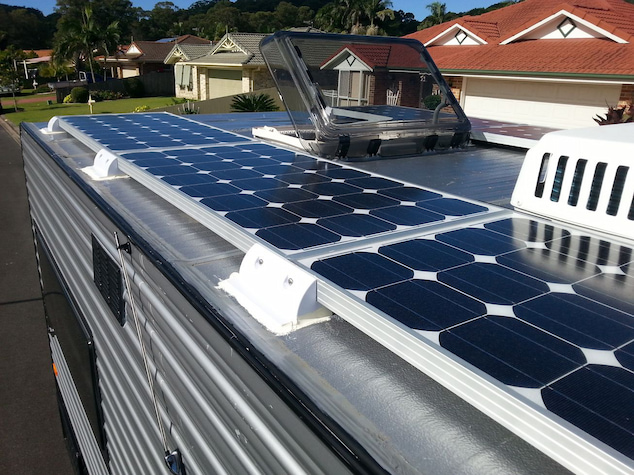
Of all the options available, larger panels sitting on caravan rooftops are one solution that requires the least amount of hassle. Once bolted on, they’re there to stay. And panels are getting better by the day, with improved efficiency, better build, sleeker designs and lower weight. You’ll have more than enough power feeding into batteries, without the tedious task of moving heavy portable panels around.
Pros (and a few cons) of Fixed Solar Panels
Fixed panels have quite a few things going their way. As mentioned, you install them only once, and they’re always running, so you get batteries charged while driving and when parked without having to budge. And once bolted on, they’re not affected by rain or gusts, and aren’t as easy to pinch as portable varieties. Being larger, they also produce more power and traditional types such as Monocrystalline panels are some of the more efficient you can find. Most fixed panels also come with their own regulators, and this is a cost-saving that can be put to better use.
The only downsides are the weight and size. These things can get heavy, as they have thick layers of protective glass and will quickly eat into roof-carrying capacity. Also, they take up quite a bit of space, but if you want the luxury of fridges, microwaves and air conditioners when on the road, this is a small sacrifice you’ll have to pay.
Types of Panels
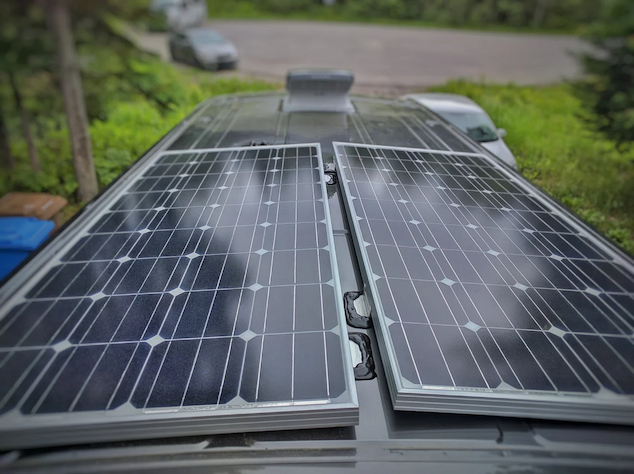
When looking for a caravan solar panel, the first thing of note is the different varieties. These can be categorized by how they’re made. Mono-crystalline panels consist of a single piece of pure silicon, sliced into wafers to form cells. This makes them easily recognisable, with their black or dark blue colour. The construction allows for better conductivity (as the single piece of silicon allows more movement for electrons) and thus higher efficiency, even on cloudy days. Monocrystalline panels also handle higher heat levels better, meaning more power is retained in typical Aussie weather. And they can be optioned in smaller sizes for comparable power output, meaning less weight. Something to consider if you’re a heavy power user. All these pros though do have a price, and monocrystalline panels are the more costly variants.
Related are a newer version – Mono PERC (passivated emitter rear cell) panels with a revised layout that includes an additional lower layer for even higher efficiency. They’re easily spotted with their black colour and rounded edges. Mono PERC panels are recommended if you have high energy needs and are short on rooftop space. Be prepared for the price though.
The next rung down the solar panel ladder are polycrystalline panels. These are a blend of multiple pieces of crushed silicon and are identified by the squared-shaped cells and light blue colour. While less expensive to make and buy, these panels are somewhat less efficient, and power output will degenerate as temperatures climb. Lastly consider newer thin-film panels if your caravan roof isn’t flat and you need flexible and lightweight options that can adjust to just about any surface. These are also easy to move around, but have the lowest efficiency rates and prices aren’t as low as you’d expect.
Other Options
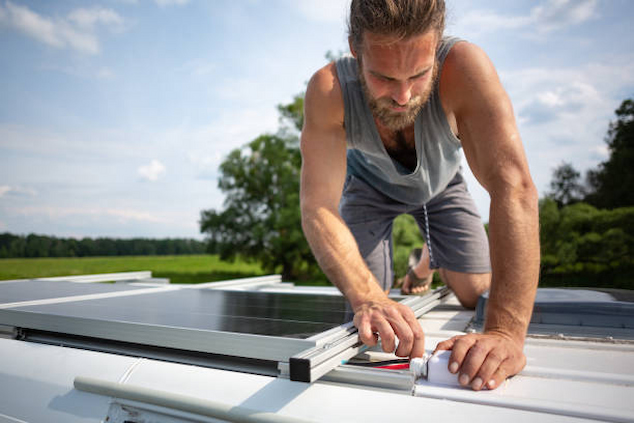
While fixed panels allow more time to enjoy your trip, if you only need power for a few basic necessities, such as charging phones or laptops, or making a decent cup of coffee, portable solar mats and blankets might be just what you need. These are quite smaller, can be moved around to absorb available sunlight, and aren’t as heavy. They do however need careful installation, aren’t as durable or well made, and can get damaged or stolen. Another thing is that they’re aren’t as effective so not the best solution for a caravan. Most caravanners have the best of both worlds. with a dedicated fixed caravan solar panel setup on the roof, and a few blankets or mats to top up batteries when parked in the shade.
What to Look for?
Before buying anything relating to caravan solar, consider your power needs first. Calculate the power requirements of every device and appliance and the time you’ll be using them. Also, think of other gear you’ll need to get things up and running. You’ll want a high capacity deep cycle battery, preferably lithium, an inverter to convert the DC power into usable AC for larger appliances, solar regulators to keep track of voltage fluctuations (and keep batteries clear of potential damage), and additions like battery monitors for safety as well as convenience. All this needs to be connected. Panels use MC4 or Anderson plugs for quick plug-and-play connections. And if you’re keen on keeping your caravan clean, and your panels in top condition, get a decent caravan cover.
As for the panels themselves, consider total power output. This roughly correlates with size and efficiency ratings. Bigger caravan panels can supply up to 400W each in ideal conditions, and monocrystalline versions will keep more of that as usable energy. Build should also be a priority, as you’ll want something that lasts. Also, have in mind how the panels will be mounted, and look for options with included mounting hardware and supplied accessories.



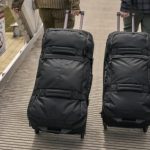
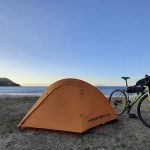
Comments are closed.